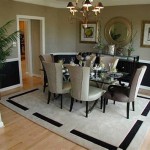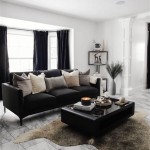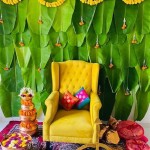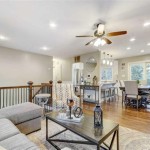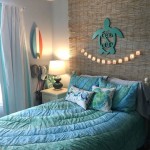Creating a Stunning Room Decor Gallery Wall
A gallery wall is a curated collection of artwork, photographs, and other decorative objects arranged on a wall, transforming a blank space into a focal point. This design element offers a powerful way to personalize a room, inject personality, and showcase individual interests and aesthetic preferences. When planning and executing a gallery wall, careful consideration of several key factors ensures a visually appealing and cohesive outcome. The following explores the process of creating a striking room decor gallery wall, offering guidance from initial planning to final installation.
Planning and Preparation: Laying the Foundation
Before placing a single nail, meticulous planning is essential. This stage involves defining the overall aesthetic, selecting the pieces, and determining the arrangement. The room's existing decor should heavily influence these decisions. For instance, a modern room might benefit from a gallery wall featuring abstract art and minimalist frames, while a more traditional setting could accommodate classic paintings and ornate frames. Determine the size of the wall space available, as this dictates the overall dimensions and the number of pieces involved. Measure the wall's width and height to establish a visual boundary.
Next, decide on the theme or unifying element of the gallery wall. This could be a specific color palette, a particular artistic style (e.g., photography, watercolors, abstract), a common subject matter (e.g., landscapes, portraits, botanical prints), or a shared material (e.g., wood frames, metal artwork). This unifying factor will ensure the gallery wall feels cohesive rather than a random assortment. Gather the pieces intended for the gallery wall. This could involve purchasing new art, repurposing existing artwork, or printing personal photographs. Importantly, consider the sizes, shapes, and orientations (portrait or landscape) of the individual pieces. A variety of sizes adds visual interest and dynamism to the composition. Consider the frames, as they will significantly impact the overall appearance. Standardize the frame style and color, or embrace a mix-and-match approach for a more eclectic look, but always ensure there is an underlying consistency to pull the display together.
Selecting the Art and Framing Choices
The selection of art pieces is a critical step that defines the gallery wall's character. Consider the interplay of colors, textures, and subject matter. A monochromatic theme, built upon shades of one color, offers a sophisticated and calming effect. Alternatively, a gallery wall featuring a vibrant, multi-colored palette adds energy and excitement to the space. The textures of the artwork, from the smooth finish of a photograph to the rough surface of a canvas, provide another dimension of visual interest. Ensure the chosen pieces complement each other in terms of aesthetics, even if they represent diverse subjects or styles.
Framing choices are equally important. Frames can significantly enhance or detract from the artwork. For a modern aesthetic, consider sleek, minimalist frames in black, white, or metal. Traditional styles benefit from ornate frames with intricate details. The frame's matting, the border between the artwork and the frame, can add depth and visual space. Choose matting colors that complement the artwork and the overall color scheme of the gallery wall. Consider the presence of glass or acrylic in the frames. While glass offers a clear, crisp view, it can be prone to reflection. Acrylic is a lighter and shatter-resistant alternative, making it safer for areas with high traffic or children.
Arrangement and Layout Strategies
Before committing to the wall, experiment with different arrangements on the floor. Measure out the total area of the wall space on the floor and lay out the artwork within that space, using masking tape to mark the boundaries. There are several popular arrangement styles. A symmetrical layout involves arranging pieces in a balanced and organized pattern, often with a central focal point. This creates a sense of order and formality. An asymmetrical layout offers a more dynamic and casual appearance, with pieces arranged seemingly at random, but with a careful balance in weight and size to create a pleasing visual flow. A grid layout arranges pieces in neat rows and columns, offering a clean and modern aesthetic. A salon-style layout, a more traditional approach, involves closely grouping pieces together, often overlapping, to create a dense and immersive effect.
When arranging artwork, consider the "rule of thirds." This principle suggests dividing the wall space into three equal horizontal and vertical sections. Placing key artwork or focal pieces at the intersection points can create visual interest and balance. The spacing between the artwork is also critical. Too much space can make the gallery wall feel sparse, while too little space can create a cluttered appearance. Aim for consistent spacing, typically between two and four inches, between the frames. Incorporate a variety of sizes, shapes, and orientations. Mix larger pieces with smaller pieces to add visual interest. Also, vary the heights of the frames to avoid a rigid, predictable arrangement. Use a focal point to anchor the gallery wall. This could be a larger piece of artwork, a piece with a striking color, or one that captures the viewer's attention immediately.
Hanging and Installation: Making it Real
Once the ideal layout is determined, carefully transfer the arrangement to the wall. Consider the hanging process and the chosen hardware. Use painter’s tape to mark the location of each piece on the wall. This allows for adjustments before committing to permanent holes. Take accurate measurements to ensure the pieces are hung in the proper locations. Consider the use of picture-hanging hooks, nails, or screws. The weight of the artwork will determine the appropriate hardware. For heavier pieces, consider using wall anchors to provide additional support. Use a level to ensure each piece is hung straight. This seemingly small detail has a significant impact on the overall aesthetic. Install the gallery wall piece by piece, starting with a central piece and working outward.
Adding Finishing Touches
After hanging the artwork, step back and assess the overall effect. Ensure the arrangement is visually balanced and cohesive. Make any necessary adjustments regarding spacing or placement. Consider the lighting of the gallery wall. Proper lighting can significantly enhance the artwork and create a more dramatic effect. Use track lighting, spotlights, or picture lights to illuminate each piece individually or the entire gallery wall. Accessorize surrounding decor to create a cohesive look, like adding decor to an existing console table. Reflect on the completed gallery wall. It is a space to display personal interests and an expression of style.

15 Wall Decor Ideas For Living Room Decorpot

Gallery Wall Décor Ideas Best Ways To Decorate Walls

How To Create A Gallery Wall By Home Decor Specialist Saranya Ideas Inspirations Updates

Bedroom Wall Art Gallery Set Of 3 Prints Boho Decor

Art Street Wall Décor Gallery Minimalist Print Set Of 9 Framed Prints Paintings For Home Bedroom Living Room Office Size 3 12 X

Fall In Love With Designs Home Decor Ideas Frames Inspirations Updates

10 Unique Wall Decor Ideas To Decorate Your Abode Goodhomes Co In

Create A Stunning Gallery Wall In Your Home Designcafe

Living Room Gallery Wall Love Grows Wild

45 Stylish Wall Decor Ideas For Every Room
Related Posts

